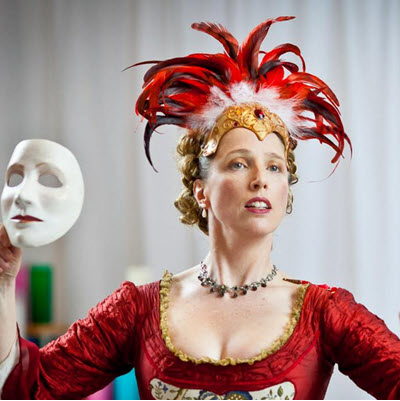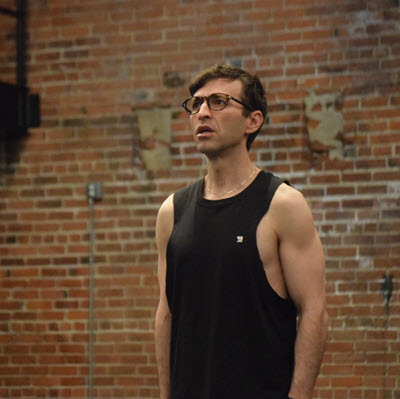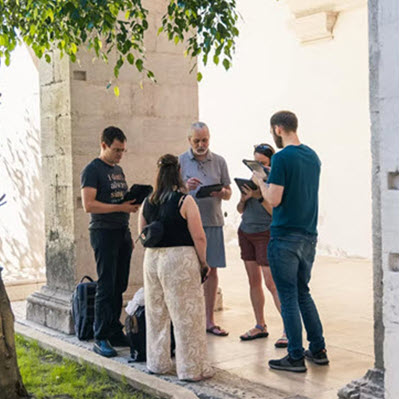by Anne E. Johnson
Published December 16, 2024
Besides the sheer scale of the series, there’s another special aspect to Palestrina 500: Rather than giving concerts, the touring choirs will sing during the church’s regular Mass service.
The only festival with anything like the scope of Grand Rapids’ is at the Duomo in Milan
In 2025, Giovanni Perluigi da Palestrina turns 500. And the most ambitious celebration in North America is happening in, of all places, Grand Rapids, Michigan.
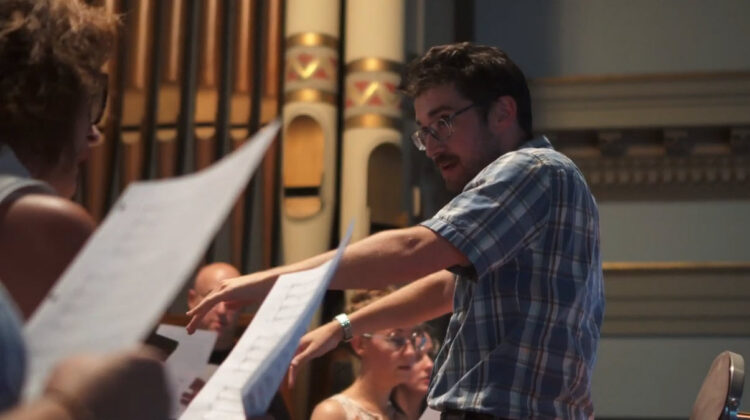
Starting Jan. 6, Sacred Heart of Jesus Catholic Parish will feature Palestrina’s music every month, with a guest vocal ensemble singing one of his Masses. The 12-program series, dubbed Palestrina 500, features groups ranging from local amateurs to global early-music stars.
The architect of this impressive tribute is Sacred Heart’s music director, Jonathan Bading, who started planning back in 2022, while in conversation with one of the parish’s religious sisters. “I said, ‘Hey, in three years Palestrina is going to have his 500th birthday. I’m thinking about bringing in a couple nice choirs and do some Masses.’ She said, ‘You should think bigger.’”
He thought huge. “We came up with the idea that we should see if the Tallis Scholars are available — let’s go right for the jugular.”
Fortunately, Tallis already had an American tour planned. They were only available to come to Grand Rapids on April 25. “I looked at the liturgical calendar, and it happened to be the Friday after Easter Sunday,” says Bading. “For Catholics, that’s a major feast.” Things looked promising. “Then they told me their price, and I about fainted.”
But the sister encouraged him to go ahead anyway. His faith was quickly rewarded: “That weekend, we had the money for Tallis to come in. The Gesualdo Six came onboard soon after, and then I started looking for more vocal groups.” In choosing the ensembles, says Bading, “I wanted to tier it and have some huge international names, some huge domestic names, and then our local best, too.”
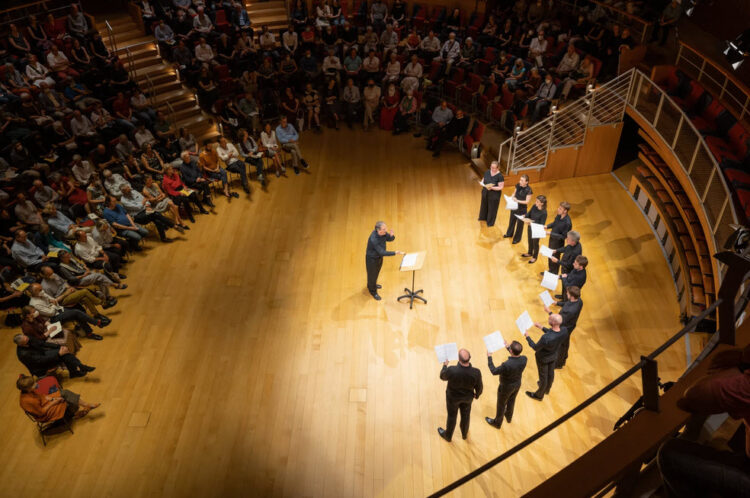
The full lineup is as follows: Chicago-based Schola Antiqua (Jan. 6); Gesualdo Six (Feb. 14); Hope College Chapel Choir of Holland, Mich. (March 25); Tallis Scholars (April 25); Grand Rapids-based Vox GR (May 29); Phoenix’s Floriani (June 27); the London Oratory Schola, a British boys’ choir (July 16); Chicago vocal quintet His Majesty’s Men (Aug. 15); local choir Gaudete, which Bading directs (Sept. 15); the Choir of Trinity College in Toronto, led by Daniel Taylor (Oct. 7); Schola Cantorum Detroit (Nov. 3); and Bading’s own Sacred Heart Parish Choir bringing the yearlong party to a close (Dec. 8).
Booking three ensembles from London was a pragmatic coincidence. Tallis and Gesualdo tour North America regularly. The London Oratory Schola’s director, Charles Kohler, had already been mulling an American tour. Bading considered approaching the Julian Choir at the Sistine Chapel, where Palestrina himself sang and composed, but it was logistically impractical.
Besides the sheer scale of the series, there’s another special aspect to Palestrina 500: Rather than giving concerts, the groups will sing during the regular Mass service. “We’re doing it in the old Trinity Mass,” says Bading. “These Masses will be done with Latin and all the ‘smells and bells.’ We’re used to that as a parish, but I think a lot of people coming in will say, ‘What in the world?’”
Chicago’s Schola Antiqua director Michael Alan Anderson looks forward to the experience, partly because of his views against performing Masses outside sacred spaces. “I would never anymore program a Mass in a concert,” Anderson says. “That kind of music belongs in a certain place.”
“That’s what he wrote it for,” Bading says of Palestrina’s work. “It takes on a mystical, sacramental quality when you hear it accompanied by the clinking of the thurible with the incense, when you hear the bells ringing for the Sanctus or during the Elevation, and you hear priests muttering and chanting Latin.” Bading adds, “Polyphony stems out of chant in terms of the modal nature of it, so when you hear the polyphony contrasted with the Gregorian chant, it’s just like fine dining, it’s so rich.”
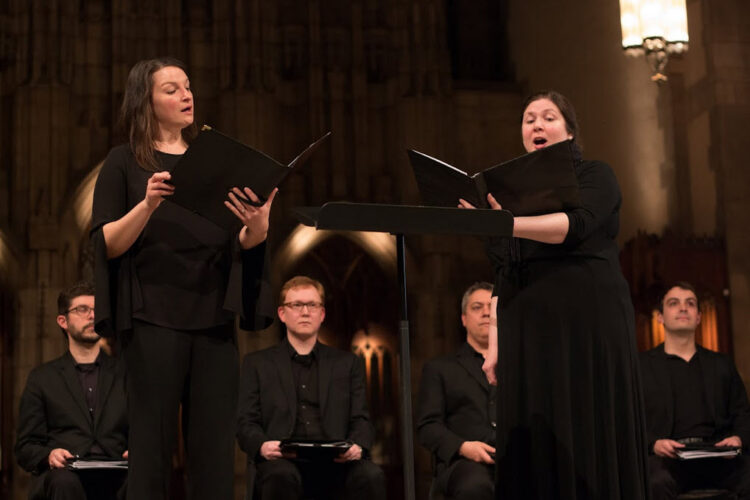
Richard Childress, director of His Majesty’s Men, converted to Catholicism in 2016. “The music took on an even greater significance,” he says of his experience. “When you listen in a concert hall, it’s more analytical. You’re listening to just the notes. In the liturgy, you have all these other things coming in, and I think the experience is more transcendental.”
“You’re providing a service towards the sacred ritual rather than a concert experience where you are trying to satisfy your audience,” says Owain Park, director of the Gesualdo Six, of singing within the liturgy.
“I think it just brings the music into itself and gets it out of a vacuum,” says Bading. “It’s so much more profound.”
The complexity of the liturgical calendar left Bading with the challenge of giving his guest programming choices yet being sure no two groups sang the same Mass. “The only one I [specifically] requested was Papae Marcelli from Tallis, because we just have to have that.” On the other hand, “some of the motets are going to overlap.”
Ensembles will mainly sing motets during a Choral Meditation before each service. For that hour, each group can choose any sacred music, as long as there’s at least one Palestrina selection. “I have groups singing Dufay and Josquin and Arvo Pärt,” says Bading. “I wanted to give them the full spectrum to explore the rich acoustic we have at Sacred Heart.”
“We’ll probably be singing Super flumina Babylonis and Sicut cervus along with some Josquin motets,” Park predicts for the Gesualdo Six meditation program. Childress foresees his group doing something by Victoria. He’s eager to include a work written for them, Chad McCoy’s 2022 A Cloud Enveloped Them, as well as Pablo Casals’ setting of O vos omnes.
Besides a few Palestrina motets for the season of Epiphany, Schola Antiqua will fill the meditation hour with two sections of the composer’s spiritual madrigal “Virgine bella” and a litany for the Blessed Virgin. They’re including “a villancico by Guerrero because it’s just too good to leave out,” says Anderson. While Schola Antiqua will be the first of multiple groups to sing Sicut cervus, they’ll add the lesser-known second section, which Anderson says “crystallizes the wonderful perfect arch of Renaissance counterpoint distilled in that piece.”
As for the Tallis Scholars, music director Peter Phillips says they will compare Palestrina with Lassus. On their spring 2025 American tour, “we’re singing Lassus’ Timoret tremor, which is a chromatic adventure and very difficult to tune. Palestrina is never that difficult to tune. We’re singing his Laudate pueri, a fantastically sonorous double-choir setting of that Vespers psalm.”
After the diverse offerings of the meditation, says Bading, “the Mass is pure Palestrina and Gregorian chant.” The Sacred Heart’s schola will sing the Mass Propers as chant, interspersed with the visiting ensemble singing Palestrina’s polyphonic Ordinary movements.
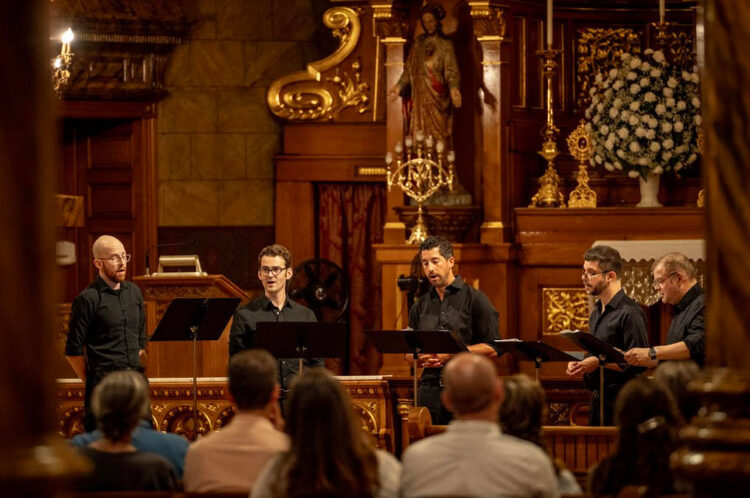
Phillips doesn’t mind being assigned the old warhorse dedicated to Pope Marcellus. “I never get bored with it,” he says. Childress dug up the five-voice Missa Regina coeli (one of the composer’s two settings), noting its liturgically appropriate source material, the Marian antiphon for the season of Easter. For Epiphany, Schola Antiqua will sing the Missa Alma redemptoris mater, adding two Palestrina motets as Propers within the Mass. The Gesualdo Six is also preparing something special, the Missa Sine nomine.
Evolving Palestrina Performance
Bading is not concerned with how historical performance issues are handled by the ensembles in this series. “We don’t believe this music is a museum piece, especially when it’s properly placed in the liturgy. So for the local groups, I just said, ‘Come sing this music.’” On the other hand, he finds that even amateur groups such as his parish volunteer choir can benefit from a peek at historical practice. At a recent rehearsal he discussed the concept of part books versus score, urging the singers to try “thinking of it as horizontal music.” Their response? “Whoa, that’s a lot easier. That’s an amazing texture!”
Anderson believes that reading from part books can best convey the architecture of Palestrina’s work. “The choirbook format that isolates parts is much more helpful for a modern person to understand what was going on” because it forces the singer to listen differently. “In a modern score, we are spoiled to see everything around us.” Yet Anderson admits it’s impractical to rehearse with part books. “If we had full salaries to just sing the liturgy, I would say, ‘Let’s learn from the original.’”
Phillips, by contrast, does not pine for the good ol’ centuries when part books were commonplace. “The score is much, much easier to read. Everything is there. It saves endless amounts of time. So, we’re not authentic in that way.” There’s another way that Tallis’ Palestrina is purposely inauthentic: “We make no attempt to sing in the style of the Sistine Chapel choir in Palestrina’s time. All the evidence is that it was terrible.”
Overall, Phillips thinks performance of Palestrina is still changing. “Instead of singing him like they did 50 years ago, in an operatic tradition with big, wobbly voices, we’ve stopped all that. We started a new way of doing it, which I think is only just being explored.”
‘We make no attempt to sing in the style of the Sistine Chapel choir in Palestrina’s time. All the evidence is that it was terrible.’
What is it about Palestrina that makes him worth this sustained effort? As Anderson puts it, “Palestrina was certainly in the right place at the right time,” referring to the composer’s favorable position in Rome just as the Council of Trent was objecting to the trend of more emotionally intense and chromatic compositional styles—quite different from Palestrina’s approach—as music for the Church.
So, is it just luck that we’re still celebrating him half a millennium later? “The best way of answering that is just to sing his music,” says Phillips, adding, “If you can sing Palestrina well, you can sing anything.”
Not that it’s particularly hard to sing, Phillips explains. “Palestrina is one of the easiest composers to sing just from the point of view of getting the notes right. But that’s not nearly enough. You need to sing it very well in tune and well blended between the voices. If a voice sticks out in an unsuitable way, then Palestrina will sound second-rate instantly.
“There’s something very straightforward about Palestrina,” continues Phillips. “If you run your choir from the point of view of wanting very passionately chromatic music, the kind of thing that Gesualdo is so good at, Palestrina is not for you.”
As compared to Josquin, Park says Palestrina’s phrases are “less built with technical elements or structural elements in place. His music is more about the imitation and the interplay between the parts than with Josquin. It’s beautifully crafted, and it’s wonderful to sing.”
“His music hits some gold standards that no one else could,” agrees Anderson. Yet “his legacy today possibly rests on two pieces: Sicut cirvus and the Mass for Pope Marcellus. That’s not much for the place we have accorded him for centuries.” Anderson hopes the birthday celebrations will encourage listeners and musicians to develop an understanding of Palestrina “that’s more than a couple of sound bites.”
Phillips is thoroughly convinced already: “He’s the most influential composer in classical music. No one else comes near.”
Grand Rapids is not the only place to hear this influential composer in 2025. Some of the visiting groups will be performing elsewhere. Schola Antiqua will include Palestrina motets and other works (but no Masses) on 2025 concerts in Ann Arbor and Chicago. During its tour, the Gesualdo Six will compare their chromatics-obsessed namesake to the birthday boy.
There’s plenty to choose from, including 107 Masses. And every work is available in two well-respected editions from the 1880s and 1930s. “We do want to keep our repertoire growing,” a consideration prompting his decision to include the hexachord-based Missa Ut re mi. “I think what’s going to happen in 2025,” says Phillips, “is we’ll get a chance to explore Palestrina more widely because everyone is suddenly interested in this very great composer.”
Even amid those planned tours, the Sacred Heart Palestrina 500 series remains exceptional. In America, birthday acknowledgments of Palestrina tend to be one-offs. For example, Fior Angelico in Columbus, Ohio, will devote one concert to him, as will the Psalterium Institute in Maine and the Emmanuel Choir in Bethesda, Maryland.
The only festival with anything like the scope of Grand Rapids’ is at the Duomo in Milan.
Although the yearlong Palestrina series is unique, Sacred Heart does bring in ensembles periodically to sing at its liturgical services. (They’re also installing a Fratelli Rufati pipe organ next summer, allowing them to start an organ recital series.) Bading believes that Mass services at Sacred Heart are gaining credibility. “Our reputation has been going up as a place for serious sacred music in the Midwest.” He even has a top-three list of other composers he’d like to celebrate: Victoria, Monteverdi, and Josquin.
But first, the Sacred Heart community gets a year of Palestrina. If Bading’s crowdfunding efforts are anything to go by—they are nearing their $150,000 goal—everyone is excited. “We’ve had a lot of donors from the community, Catholics and non-Catholics alike, people who just love music.”
As a church, Sacred Heart doesn’t charge an entry fee. “The funny thing is, Tallis is coming to Hope College [in nearby Holland, Mich.] the next night after they come here, and people are going to pay a good amount of money for a ticket. But our community can hear these guys totally for free.” Bading laughs. “People might be camping out on the steps of the church. We’ll have to see how that day goes.”
Anne E. Johnson is the EMA Book Editor and a frequent contributor to EMA and Classical Voice North America. She teaches music theory, ear training, and composition geared toward Irish trad musicians at the Irish Arts Center in New York and on her website, IrishMusicTeacher.com.

